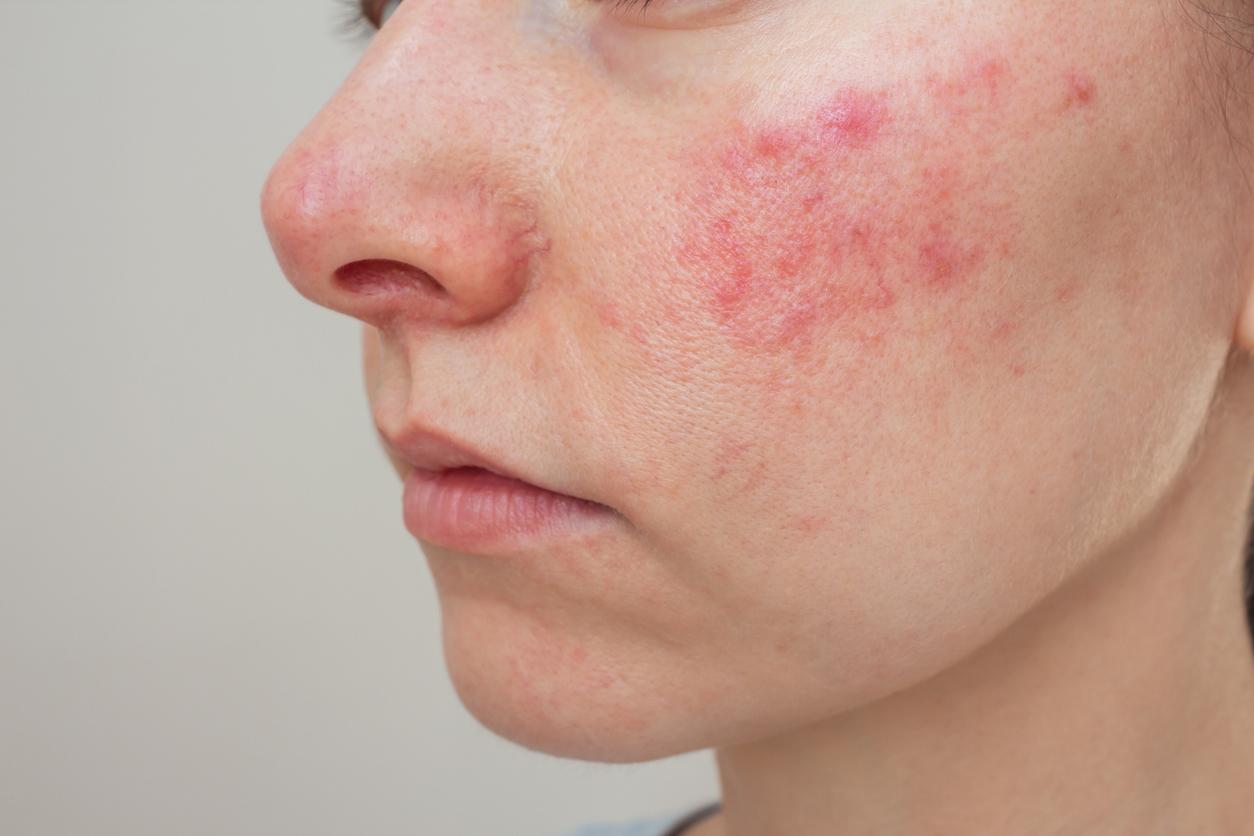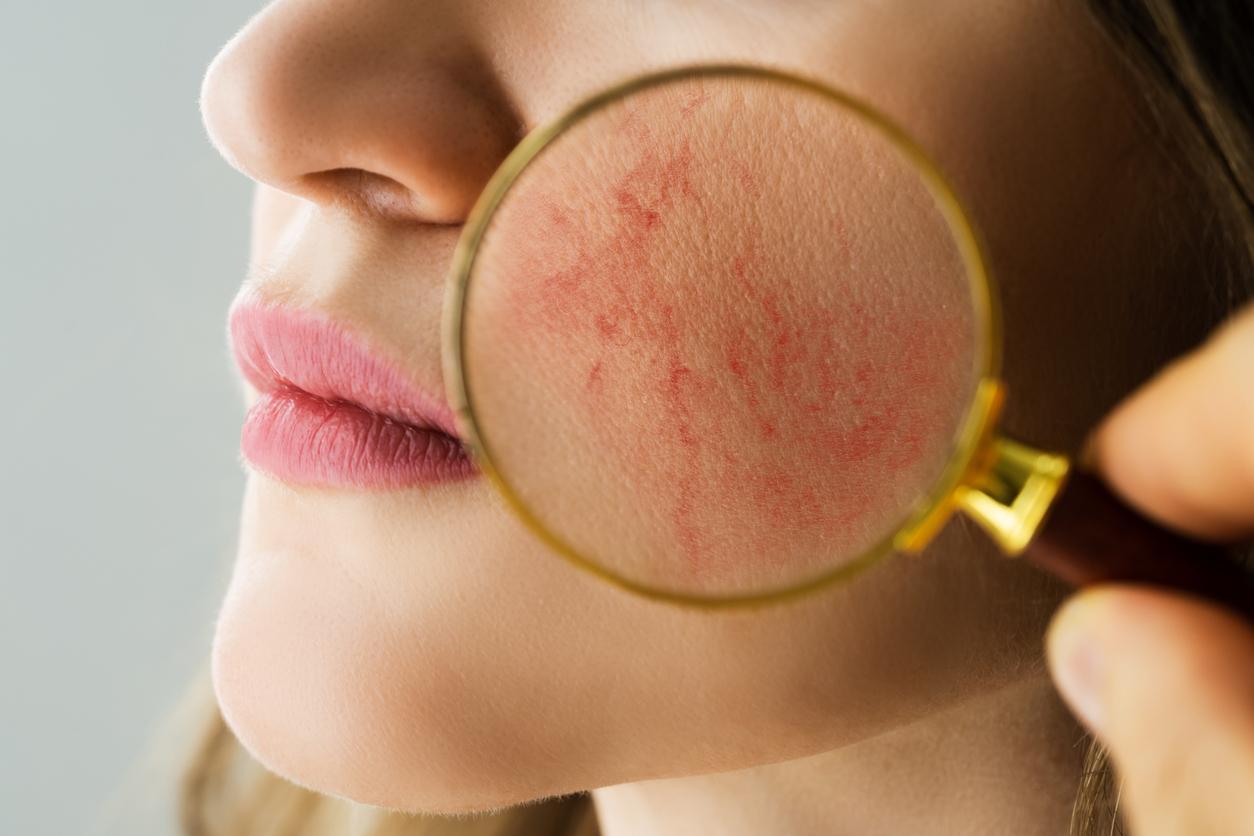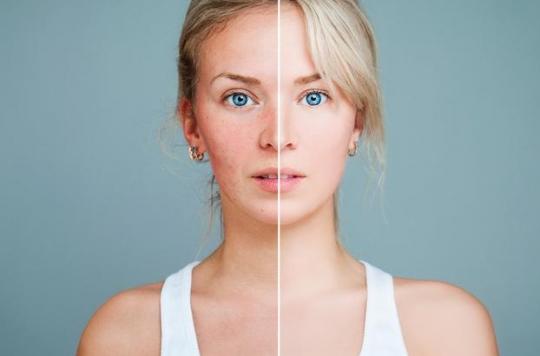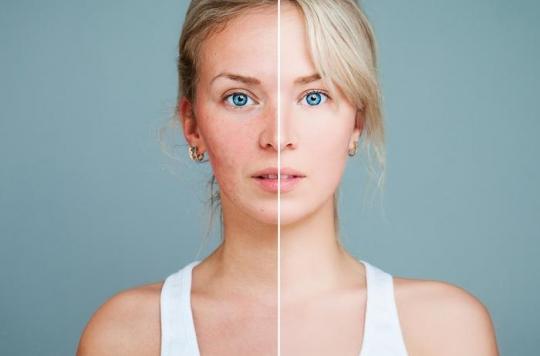Rosacea is characterized by the appearance of sudden redness, hot flushes, triggered by an emotion or a sudden change in temperature, the consumption of spicy foods or alcohol… The vessels dilate and the face reddens from fleeting way. These are flushes, the first stage of this condition.
An evolution in 4 stages
Over time, it can evolve. The redness then settles permanently. This is stage II of the disease, in other words rosacea. It is often at this time that this condition, incidentally benign, begins to cause concern… because of the aesthetic discomfort caused.
It can progress to rosacea, which marks stage III of the disease and is reflected, on this already reddened ground, by outbreaks of red pimples, sometimes with white dots. Stage IV is marked, meanwhile, by a significant, even disfiguring, thickening of the nose.
Poor facial vascularization
Stop misconceptions! This pathology is in no way linked to a lack of hygiene of life or to a form of alcoholism. It is caused by an abnormality of the vascular circuit of the face, which is a little too much under pressure. This therefore results, in the long term, in an apparent network of dilated vessels.
Women are more affected than men by this condition, with the exception of stage IV which concerns more men than women. Men are thus less prone to rosacea but present more severe forms.
In general, fair, fine or fragile skin is particularly predisposed. Repeated exposure to harsh climatic conditions (sun, wind, cold) is a contributing and aggravating factor. Finally, genetics is not innocent since, in 56% of cases, there is a family history of rosacea.
In collaboration with Dr Agnès Gadroy, dermatologist who practiced at the Avène spa















